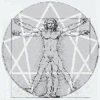Indicating what had been preserved up to our time, G. at the same time pointed out what had been lost and forgotten. He spoke of sacred dances which accompanied the “services” in the “temples of repetition” and which were not included in the Christian form of worship. He also spoke of various exercises, and of special postures for different prayers, that is, for different kinds of meditation; about acquiring control over the breathing and of the necessity of being able to tense or RELAX any group of muscles, or the muscles of the whole body at will; and about many other things having relation, so to speak, to the “technique” of religion. Fragments: Fifteen
“In speaking of the work of the factory in general it is indispensable to establish that it is necessary to stop useless waste before there can be any sense in increasing the production. If production is increased while this useless waste remains unchecked and nothing is done to stop it, the new energy produced will merely increase this useless waste and may even give rise to phenomena of an unhealthy kind. Therefore one of the first things a man must learn previous to any physical work on himself is to observe and feel muscular tension and to be able to RELAX the muscles when it is necessary, that is to say, chiefly to RELAX unnecessary tension of the muscles.” Fragments: Seventeen
In this connection G. showed us a number of different exercises for obtaining control over muscular tension and he showed us certain postures adopted in schools when praying or contemplating which a man can only adopt if he learns to RELAX unnecessary tension of the muscles. Among them was the so-called posture of Buddha with feet resting on the knees, and another still more difficult posture, which he could adopt to perfection, and which we were able to imitate only very approximately. Fragments: Seventeen
Very interesting was the exercise with a “circular sensation,” as G. called it. A man lies on his back on the floor. Trying to RELAX all his muscles, he then concentrates his attention on trying to sense his nose. When he begins to sense his nose the man then transfers his attention and tries to sense his ear; when this is achieved he transfers his attention to the right foot. From the right foot to the left; then to the left hand; then to the left ear and back again to the nose, and so on. Fragments: Seventeen

